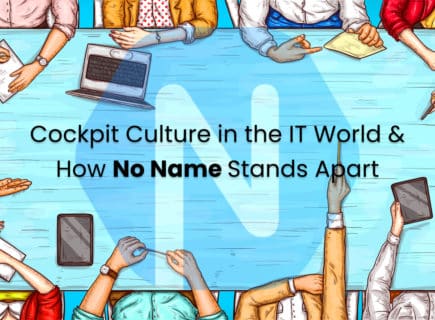Databases are the technological marvels that are the backbone of modern applications, storing and organizing data with precision. But with so many databases available, it can be overwhelming to choose which one is best for your project.
First, it’s important to understand what a database is. In simple terms, “a database is a collection of information that is organized in a way that makes it easy to access, manage, and update”. They can store, manage, and analyze large amounts of information, such as customer data, inventory information, financial records, and more.
In this article, we will navigate the database ecosystem, understand its purpose, and help you find the perfect database match for your project.
Understanding Databases: The Foundations of Your Digital Universe
Imagine a database as a gigantic warehouse with neatly labeled shelves, where you can store, organize, and retrieve your information efficiently. It acts as the central nervous system for applications, ensuring that data is securely stored and readily available when needed. From customer information to product inventory, databases serve as the backbone of your IT systems, ensuring seamless operations and efficient data management.
Types of Databases: Unveiling the Digital Diversity
Just like the diverse ecosystems found in nature, databases come in a variety of types. Each database has its own unique strengths and characteristics, tailored to suit different project requirements. Let’s explore some of the most prominent types of databases:
1) Relational Databases: Structured Data Anchors (SQL-Based)
A relational database management system (SQL database) is highly organized and structured just like a phonebook and is great for projects that require complex queries. These relational databases are often powered by the trusted SQL (Structured Query Language) and are the traditional heavyweights of the database world.
They excel at maintaining structured data with predefined schemas, offering robust data integrity and consistency. Relational databases are your trustworthy guides if you need to manage complex relationships between data entities. Some popular SQL databases are Oracle Database, MySQL, and Microsoft SQL Server.
Example: Imagine you’re building an e-commerce website. A relational database can keep track of your customers, orders, and products, ensuring seamless transactions and inventory management.
2) NoSQL Databases: Embracing Flexibility and Scalability (NoSQL-Based)
NoSQL (Not Only SQL) databases break away from the rigidity of structured data models. They are designed to handle large volumes of unstructured or semi-structured data, offering flexibility and scalability. NoSQL databases can be further categorized into document databases, key-value stores, columnar databases, and graph databases. They let you organize information in a much looser fashion and is more suitable for projects that require flexible data models and need scaling in the future. Some popular NoSQL databases are HBase, Cassandra, MongoDB, and CouchDB.
Example: Suppose your company is working on a content management system that requires storing and retrieving flexible, schema-less data such as user-generated content. A document database like MongoDB can provide the necessary flexibility to accommodate evolving content structures.
3) Graph Databases: Navigating Relationships with Ease
Graph databases excel at managing relationships between entities. They are built to efficiently handle complex networks of connections, making them perfect for applications where relationships play a crucial role, such as social networks, recommendation engines, and fraud detection systems.
Example: If your small IT company is working on a project involving a social media platform, a graph database like Neo4j can effectively store and navigate connections between users, their friends, and their activities.
RELATED: Popular Programming Languages To Use In 2023
What are Key-Value Stores in Database?
Key-value stores are designed for lightning-fast data retrieval. They store data in a simple key-value format and offer high performance and scalability. Key-value stores are ideal for caching, session management, and real-time applications that require rapid access to frequently accessed data.
Example: Suppose your company is developing a high-traffic web application that requires fast access to frequently accessed data, such as user sessions or product recommendations. A key-value store like Redis can provide the speed and scalability needed for such scenarios.
The Plenitude of Databases: Tailored Solutions for Unique Challenges
With a myriad of databases available, you might wonder why such diversity exists. The answer lies in the different challenges and requirements posed by various projects. Each database type offers specific features and benefits, catering to distinct use cases. Here’s why the database ecosystem is so abundant:
a) Diverse Data Structures:
Different projects deal with diverse data structures. Some projects require structured data with predefined schemas, while others demand flexibility for unstructured or semi-structured data. The variety of databases ensures that you can choose the most suitable one for your project’s data structure.
b) Scalability and Performance Needs:
Scalability and performance requirements vary across projects. Some applications need to handle massive amounts of data and high user loads, necessitating databases that can scale horizontally and handle high write/read rates efficiently. The diversity of databases allows you to select a solution that aligns with your scalability and performance needs.
c) Specialized Use Cases:
Projects often come with specialized requirements, such as managing complex relationships, processing time-series data, or analyzing vast networks. The availability of specialized databases ensures that you can address these unique use cases effectively.
Choosing the Best Database for Your Project: Set Sail with Confidence
Now that we understand the different types of databases and their purpose, it’s time to navigate the sea of choices and select the best one for your project to get online. Remember, the type of database that’s right for your project will depend on several factors, including the size and type of your data, the complexity of your application, and your budget. With the right database in place, you can store and manage your data more effectively, improve your business processes, and ultimately drive better results. Consider the following factors:
a) Project Requirements:
Assess the specific needs of your project, such as data structure, scalability requirements, performance expectations, and specialized use cases. Choose a database that aligns with these requirements.
b) Familiarity and Expertise:
Consider your team’s familiarity and expertise with different database technologies. Opting for a database that your team is well-versed in can expedite development and ensure smooth operations.
c) Community and Support:
Evaluate the size and activity of the database’s community. A thriving community provides access to helpful resources, forums, and support, which can be valuable during development and troubleshooting.
d) Future Growth:
Anticipate the future growth and evolution of your project. Select a database that can scale alongside your application’s expanding needs and accommodate future enhancements.
So if you’re looking to take your data management to the next level, it’s time to get in touch with No Name to know more about the different database options available today.






























